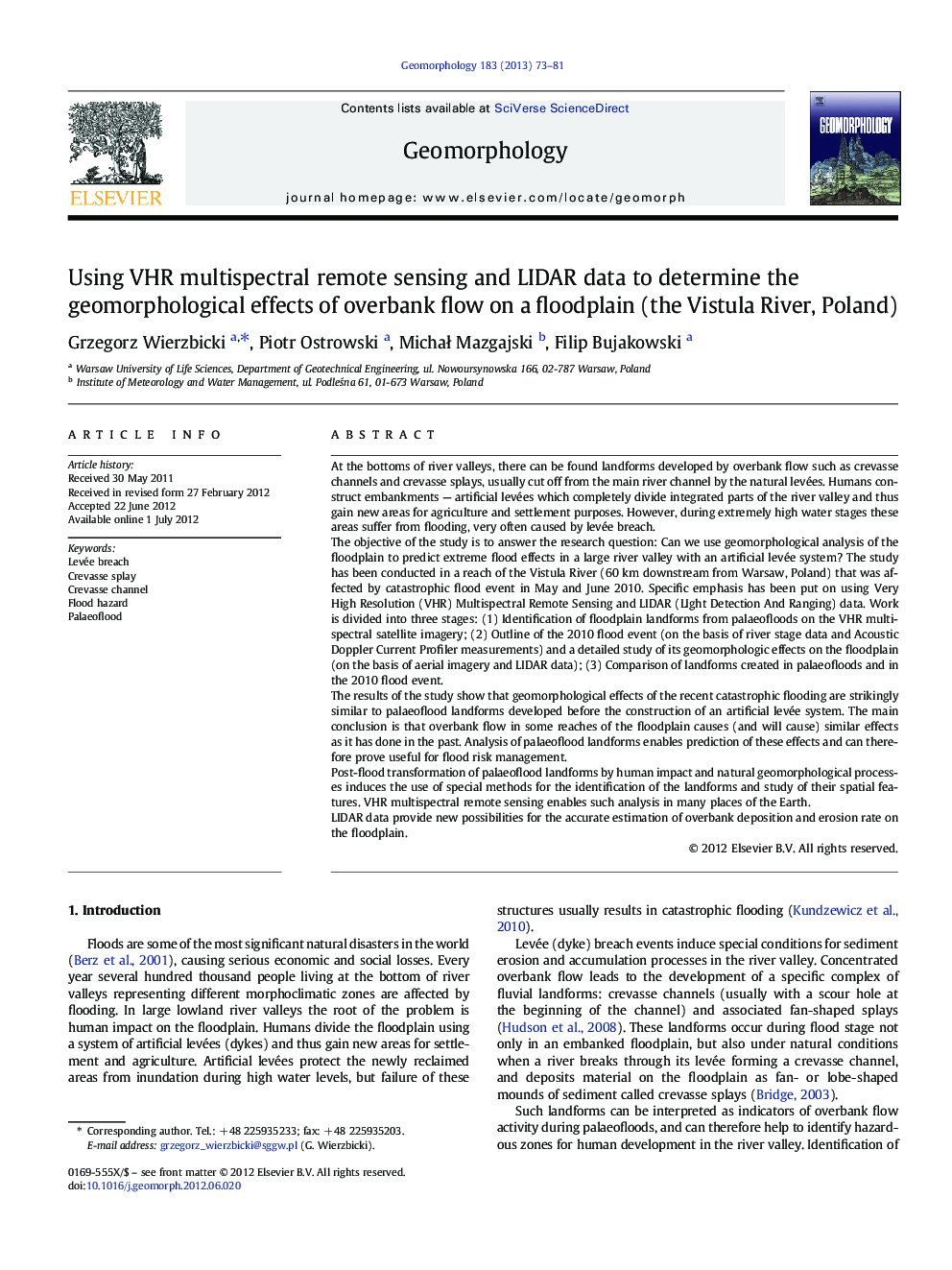| Article ID | Journal | Published Year | Pages | File Type |
|---|---|---|---|---|
| 4684974 | Geomorphology | 2013 | 9 Pages |
At the bottoms of river valleys, there can be found landforms developed by overbank flow such as crevasse channels and crevasse splays, usually cut off from the main river channel by the natural levées. Humans construct embankments — artificial levées which completely divide integrated parts of the river valley and thus gain new areas for agriculture and settlement purposes. However, during extremely high water stages these areas suffer from flooding, very often caused by levée breach.The objective of the study is to answer the research question: Can we use geomorphological analysis of the floodplain to predict extreme flood effects in a large river valley with an artificial levée system? The study has been conducted in a reach of the Vistula River (60 km downstream from Warsaw, Poland) that was affected by catastrophic flood event in May and June 2010. Specific emphasis has been put on using Very High Resolution (VHR) Multispectral Remote Sensing and LIDAR (LIght Detection And Ranging) data. Work is divided into three stages: (1) Identification of floodplain landforms from palaeofloods on the VHR multispectral satellite imagery; (2) Outline of the 2010 flood event (on the basis of river stage data and Acoustic Doppler Current Profiler measurements) and a detailed study of its geomorphologic effects on the floodplain (on the basis of aerial imagery and LIDAR data); (3) Comparison of landforms created in palaeofloods and in the 2010 flood event.The results of the study show that geomorphological effects of the recent catastrophic flooding are strikingly similar to palaeoflood landforms developed before the construction of an artificial levée system. The main conclusion is that overbank flow in some reaches of the floodplain causes (and will cause) similar effects as it has done in the past. Analysis of palaeoflood landforms enables prediction of these effects and can therefore prove useful for flood risk management.Post-flood transformation of palaeoflood landforms by human impact and natural geomorphological processes induces the use of special methods for the identification of the landforms and study of their spatial features. VHR multispectral remote sensing enables such analysis in many places of the Earth.LIDAR data provide new possibilities for the accurate estimation of overbank deposition and erosion rate on the floodplain.
Graphical abstractFigure optionsDownload full-size imageDownload as PowerPoint slide
